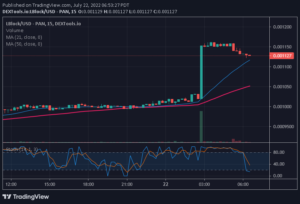
CME Group Micro Crude Oil futures (MCL) offer traders the opportunity to trade West Texas Intermediate (“WTI”) crude oil futures with a smaller contract size. Micro Crude Oil futures offer many key advantages for traders. When trading MCL futures it is important to be cognizant of the factors that can influence the price of crude oil.
What is West Texas Intermediate (WTI) Crude Oil?
West Texas Intermediate Crude Oil, or simply “WTI” is a grade of oil mainly produced in the Permian Basin in west Texas and eastern New Mexico. It is the most important grade of oil in the U.S., as it accounts for the majority of US production. WTI is known as a “light, sweet” oil grade which is easier to refine and produces more gasoline than “heavy, sour” oil grades. Light oil is less dense that heavy oil and a sweet oil has a lower sulfur content than a sour oil. These factors make WTI a global benchmark.
Factors that Influence the Crude Oil Market
Many factors influence the crude oil market and the price of WTI, including supply and demand, economic growth outlook, geopolitical events and even seasonality.
- Economic Growth: A growing economy will naturally lead to a growing demand for energy consumption which includes crude oil. While 83% of crude oil refinery output is for motor gasoline, distillate fuel oil and jet fuel, the other 17% is for industrial uses. In a growing economy, there is more demand for fuels and industrial products.
- Supply: Crude oil supply is impacted by several factors including OPEC production quotas, new oil discoveries and the level of prices. Since 2006, U.S. domestic production of crude oil has more than doubled due to the “shale revolution” as new extraction techniques enabled significant increases in crude oil production mainly in Texas and North Dakota.
- Demand: In addition to economic growth, other factors may impact the demand for crude oil, especially in the long run. There is a global trend to move towards clean and renewable energy and while this process will take many years at some point it will start to impact demand for crude oil.
- Seasonality: The “summer driving season” in the U.S. typically starts on Memorial Day and goes through Labor Day. It is estimated that on average in the U.S., the summer months see about 20% more miles driven per day than the winter months. Since about 50 % of a barrel of oil is refined into motor gasoline, a strong summer driving season can impact the price of gasoline and therefore also impact the price of crude oil.
- Geopolitical Events: Examples of geopolitical events can include: A hurricane in the U.S. Gulf Coast can shut down drilling rigs and refineries and lead to a spike in crude oil prices. Political events in major crude oil-producing countries can threaten to shut down production. An accident at a refinery or pipeline can reduces the supply of gasoline.
Get Started with NinjaTrader
NinjaTrader supports more than 500,000 traders worldwide with a powerful and user-friendly trading platform, deep discount commissions and world-class support. NinjaTrader is always free to use for advanced charting & strategy backtesting through an immersive trading simulator.
Download NinjaTrader’s award-winning trading platform and get started with a free trading demo with real-time market data today!
Source: https://ninjatrader.com/blog/what-moves-the-micro-crude-oil-market/
- &
- 000
- Benchmark
- cognizant
- consumption
- content
- contract
- countries
- Dakota
- data
- day
- Demand
- Discount
- driven
- driving
- eastern
- Economic
- Economic growth
- economy
- energy
- events
- extraction
- Free
- Fuel
- Futures
- Global
- Group
- Growing
- Growth
- HTTPS
- immersive
- Impact
- Including
- industrial
- influence
- IT
- Key
- labor
- lead
- Level
- light
- Long
- major
- Majority
- Market
- Memorial
- Mexico
- months
- move
- moves
- North
- North Dakota
- offer
- Oil
- Opportunity
- Other
- Outlook
- platform
- price
- Produced
- Production
- Products
- real-time
- renewable energy
- Run
- Size
- start
- started
- Strategy
- summer
- supply
- support
- Supports
- sweet
- texas
- trade
- Traders
- Trading
- u.s.
- us
- West
- worldwide
- years




